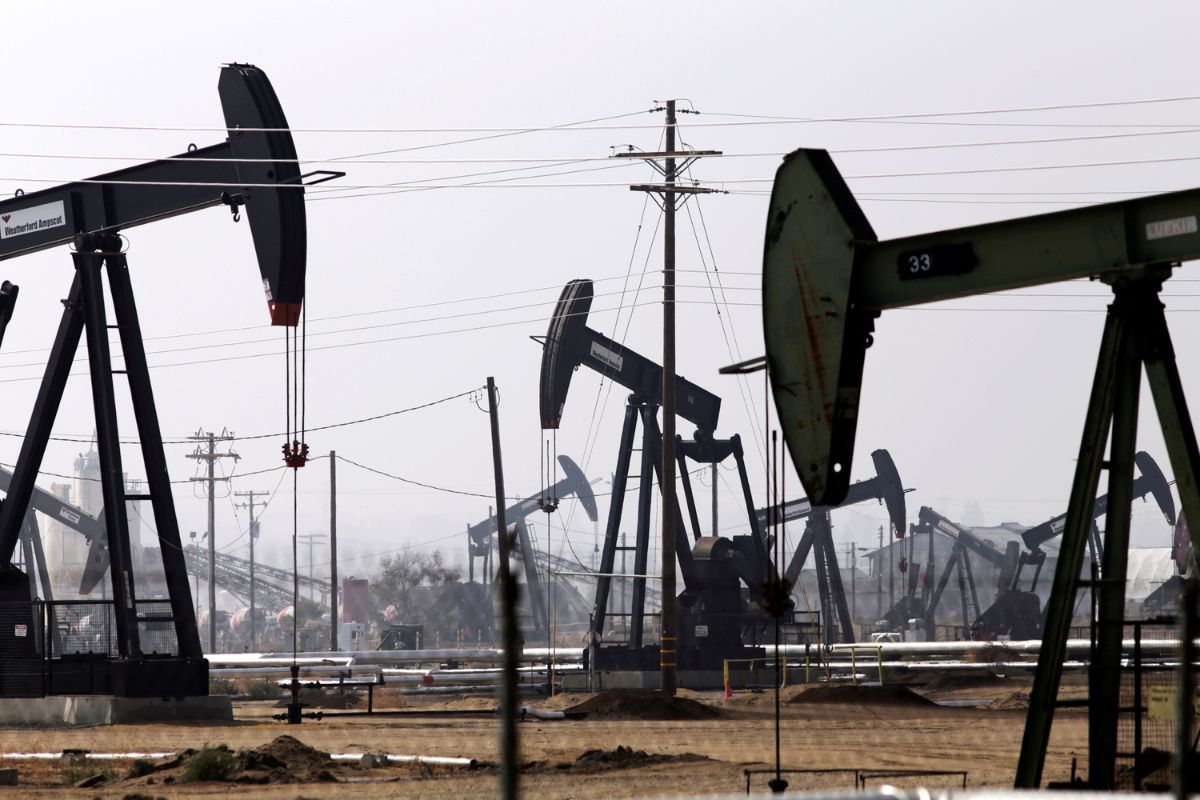Dollar Surge Rocks Oil Prices: The recent surge in the dollar has sent shockwaves through global oil markets, setting the stage for a potential seismic shift in interest rates.
As oil prices fluctuate in response to this newfound pressure, the implications for consumers, businesses, and economies worldwide are nothing short of staggering.
With the convergence of these two powerful forces, the intricate dance between oil prices and interest rates is poised to take center stage, leaving many wondering how this intricate interplay will unfold in the coming days.
Oil Price Decline and Market Factors
In the realm of volatile markets, the decline in oil prices, fueled by the surging strength of the U.S. dollar, has set off alarm bells among investors and analysts alike.
The recent drop in oil prices, with Brent crude futures slipping by 0.2% to $81.48 a barrel and U.S. West Texas Intermediate crude futures (WTI) declining by 0.3% to $76.27 a barrel, signals a tumultuous period ahead.
The market sentiment has palpably shifted as the risk-on sentiment retreated due to the rise of the U.S. dollar and its far-reaching implications for commodity prices. Investors now find themselves on the edge of their seats, bracing for the impact of these market factors on shifting interest rates.
The interplay between oil prices and the strength of the U.S. dollar has intensified, creating a perfect storm of uncertainty and apprehension in the financial landscape. As the dust settles, the repercussions of this intricate dance between oil prices and currency valuations will undoubtedly reverberate across global markets, leaving no stone unturned.
Also Read: Oil Prices Skyrocket: Explosive Middle East Tensions and China’s Demand Boom
Influencing Factors on Oil Prices
The intricate web of geopolitical tensions and market expectations continues to exert significant influence on the fluctuating dynamics of oil prices. Recent events, such as the Israel-Hamas conflict and the Yemeni Houthis’ attacks on ships, have injected a dose of uncertainty into the oil market. These geopolitical tensions have not only led to supply disruptions but have also heightened concerns about the stability of key oil-producing regions. The ongoing conflict resolution efforts, with various countries involved in negotiations, have only added to the market’s volatility.
Moreover, the market’s reaction to adjustments in U.S. interest rate cut expectations has further fueled the rollercoaster ride of oil prices. The delay in anticipated rate cuts due to rising inflation has sent ripples across the financial landscape, impacting not only oil prices but also broader market sentiments.
As investors grapple with these multifaceted influencing factors, the future trajectory of oil prices remains uncertain, poised on a knife’s edge waiting to be swayed by the next geopolitical development or economic indicator release.
Projections and Outlook for Oil Demand
With global energy consumption patterns shifting rapidly, the future landscape of oil demand presents a compelling narrative of uncertainty and transformation. The conflicting forces of bullish factors such as lower OPEC output and geopolitical risks, alongside bearish concerns about weakening demand in China, create a volatile environment for oil prices.
Goldman Sachs’ bold projection of a summer peak price of $87 a barrel reflects the anticipation of potential disruptions in the Red Sea and unexpected draws in OECD countries’ oil stocks. Despite these challenges, Goldman Sachs remains optimistic, forecasting a growth of 1.5 million barrels per day (bpd) in oil demand by 2024.
China’s revised demand forecast and the repercussions of U.S. sanctions on Russia’s Sovcomflot further add layers of complexity to the intricate web of factors influencing oil demand. As the market grapples with these dynamics, only time will reveal the true extent of the impact on oil prices and global energy markets.
News In Brief
The recent surge in the U.S. dollar has rattled global oil markets, leading to a decline in oil prices. Brent crude futures slipped 0.2% to $81.48 a barrel, while U.S. West Texas Intermediate crude futures declined 0.3% to $76.27 a barrel. The strengthened dollar’s impact on commodity prices has shifted market sentiment, creating uncertainty about potential changes in interest rates. Geopolitical tensions, including the Israel-Hamas conflict and attacks by Yemeni Houthis on ships, contribute to market volatility. The delay in expected U.S. interest rate cuts due to inflation concerns further adds to the rollercoaster ride in oil prices. Projections indicate a summer peak price of $87 a barrel, with uncertainties surrounding global energy consumption patterns and demand fluctuations.
Our Reader’s Queries
Q1 What is the relationship between oil prices and interest rates?
A Akram (2009) observes a positive correlation, indicating that oil prices tend to rise following a decrease in real U.S. interest rates. Supporting this inverse relationship, Arora and Tanner (2013) validate that when the ex-ante real interest rate experiences an unexpected increase, oil prices tend to decrease.
Q2 What happens to oil prices when interest rates rise?
A Historically, elevated interest rates have led to a decrease in oil prices, as they result in reduced demand for oil due to diminished economic activity and increased costs, thereby slowing down the economy.



